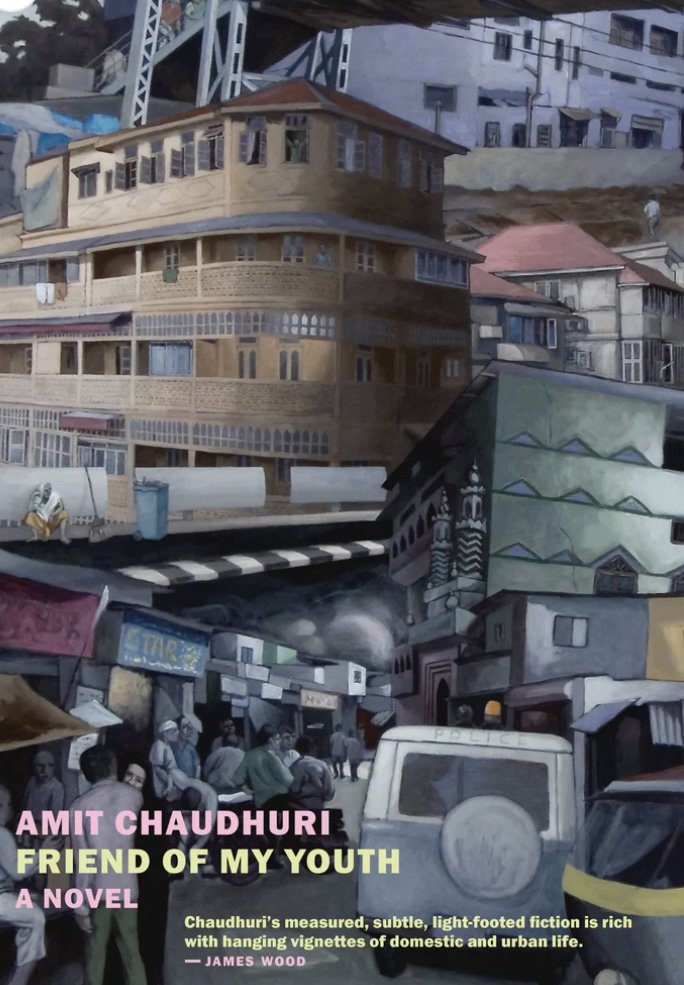Friend of My Youth by Amit Chaudhuri (New York Review of Books) ~ Janet Brown
Two aspects of the city that he still calls Bombay are what dominates the attention of a writer who grew up in this place but left it long ago. His visit is one that takes place only because of his work, drawn here for a public reading of his latest novel. Choosing to stay in the neighborhood of his childhood, he finds his focus is concentrated upon the legendary Taj Mahal Hotel and his friend Ramu.
Both the building and the friend are being reconstructed after going through violent destruction. The Taj was the site of a massacre when Pakistani terrorists descended upon it in 2008. The palatial hotel became a scene of slaughter and destruction over a period of three days. Two years later, the writer finds portions of it are off-limits. Its damage is still being repaired.
Ramu is off-limits as well. After decades of going “in and out of addiction,” he’s committed himself to a two-year program of detox, rehab, and isolation. He can have no visitors nor telephone conversations.
When the writer visits the Taj, he looks at it with an unfamiliar point of view. In discussions of the attack with shop owners and hotel staff, he frequently hears “I closed the shop early that evening” or “I was not here that day.” These words strike him harder than the description of the attackers. “Terrorist …through sheer repetition has lost all meaning,” while ‘Muslim’ has taken on a whole new weight. As he makes his way through the city, the writer looks for traces of Islam in taxi drivers, journalists, passersby on the street. When he satisfies his yearning for dishes that originally came from the Middle East, he often stresses that this is Parsi cuisine, made and sold by Zoroastrian Christians.
Although he clings to his childhood home by refusing to call it Mumbai, he recognizes it as “Bombay, least changeless of all cities!” Still, he says, “I long to visit the city I grew up in.”
But this time he roams through it without Ramu and that absence overwhelms what he sees. “I’ve always expected to see him again, whether or not I wanted to.” There’s a veil over this visit. “Behind the veil is Ramu,” and caught in memories of their friendship, the writer moves in and out of time, a kind of living ghost, feeling “no nostalgia,”only an “impossibility.” In Ramu’s absence, Bombay is closed to him.
Amit Chaudhuri is a novelist who feels “a surge of bile” against that form of writing, who says, “when I can, (I) undermine the genre I work with.” Although he and the writer in this book share the same name, the same background, the same literary creations, he claims it’s a novel because “the author and the narrator are not one.”
However Friend of My Youth has no characters and no plot, deficiencies which keep it from reaching even the status of a novella. What Chaudhuri gives readers is a malnourished travel memoir, with an old friendship serving as a Proustian madeleine, calling up a patchwork of memories. It floats through 164 pages without emotion or engagement, laboring under a title that Chaudhuri has stolen, without shame, from the Canadian writer, Alice Munroe.
Even after a second reading, this book feels as if it’s an elaborate practical joke, witless and lazy, by a man who is clearly smart enough to have done much, much better than this.
